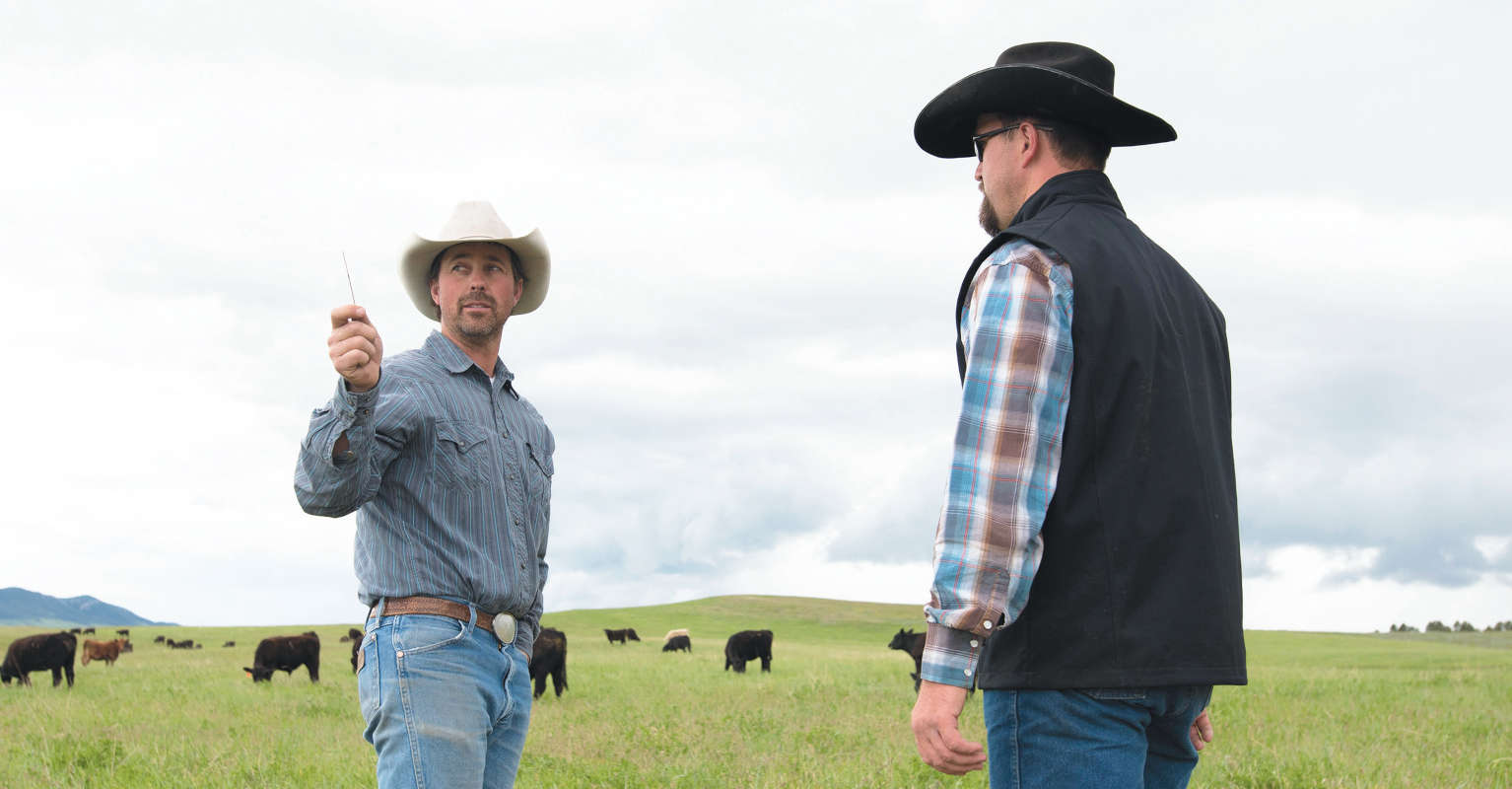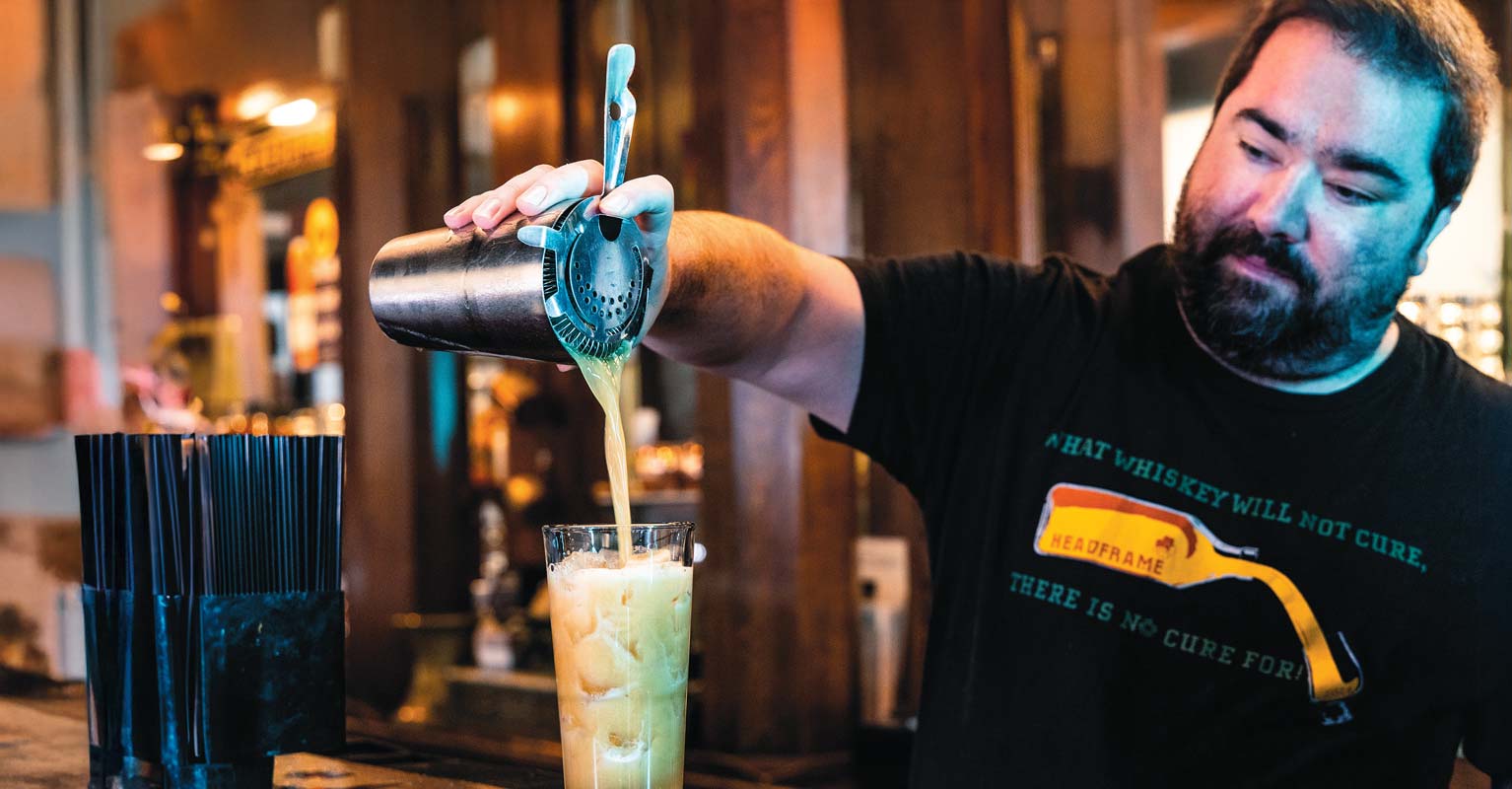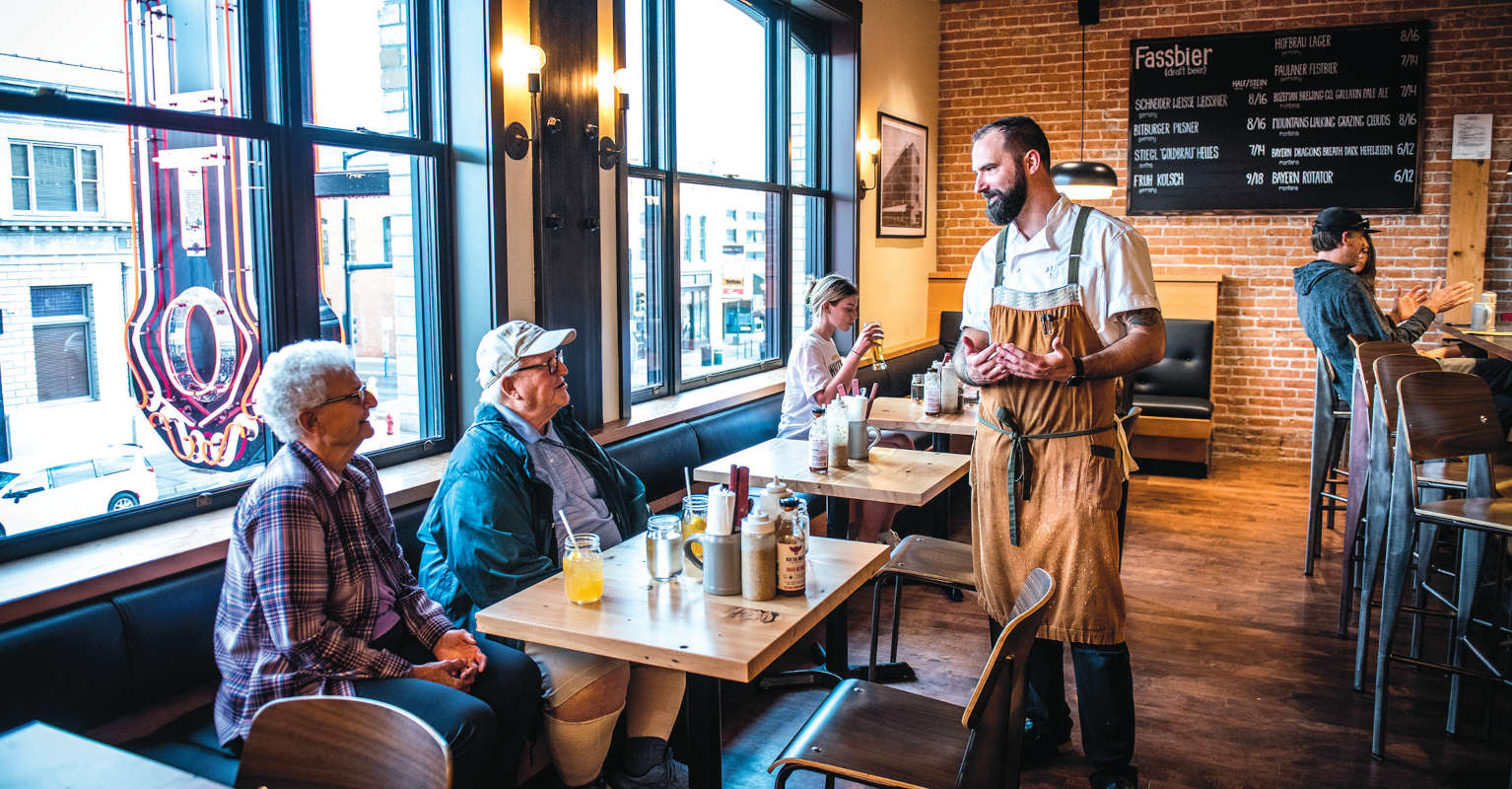Artist Agnes Denes weaves together mathematics, science, philosophy, and psychology, merging past with present with future. While she has worked in many mediums, her most remarkable pieces are massive works of land art. Here, she’s pictured in 1982 as a part of Wheatfield: A Confrontation at the Battery Park Landfill near Wall Street in New York City. Photo by John McGrail, courtesy of Agnes Denes and Leslie Tonkonow Artworks + Projects.
An Outdoor Art Installation Sparks Conversation with Wheat
Quietly sleeping in a small Bozeman lot at 719 N. Ida St., against a backdrop of bustling residential and commercial buildings, seeds of winter wheat spent the cold season hidden under snow. This spring, their verdant shoots will emerge as the subjects of a public art installation by Tinworks Art.
Wheatfield: An Inspiration. The Seed is in the Ground asks more questions than it answers. In fact, it doesn’t give any answers. It was born of the iconic 1982 installation by Agnes Denes in New York City, Wheatfield: A Confrontation, where 2 acres of wheat was planted in a landfill containing soil and rock excavated during the construction of the World Trade Center. This political and social commentary on land abuse, consumption, and hunger created a striking contrast with the city behind it. This was a tumultuous time, when many held lighters aloft to the singing of “We Are the World” and Big Ag was introducing GMOs to solve world hunger.
Fast forward 40 years and Denes is planting her wheat field again—but this time, it’s in Bozeman and fuels a different conversation. “This is about community,” Denes says. “We are planting seeds of hope.” Wheatfield: An Inspiration is more subtle than its predecessor. While the first was a confrontation of politics, the second reflects hope as an act of radical resilience.
“Bozeman is grappling with extraordinary growth,” says Jenny Moore, the director of Tinworks. Given the current dynamics of growth and development, Moore approached Denes with the concept of doing a new iteration of Wheatfield in a field owned by Tinworks as a way to reclaim the area’s agricultural history. The installation is a part of Tinworks’ larger mission to create an artist-focused platform where the community is invited to engage and grapple with the complexities of being human.
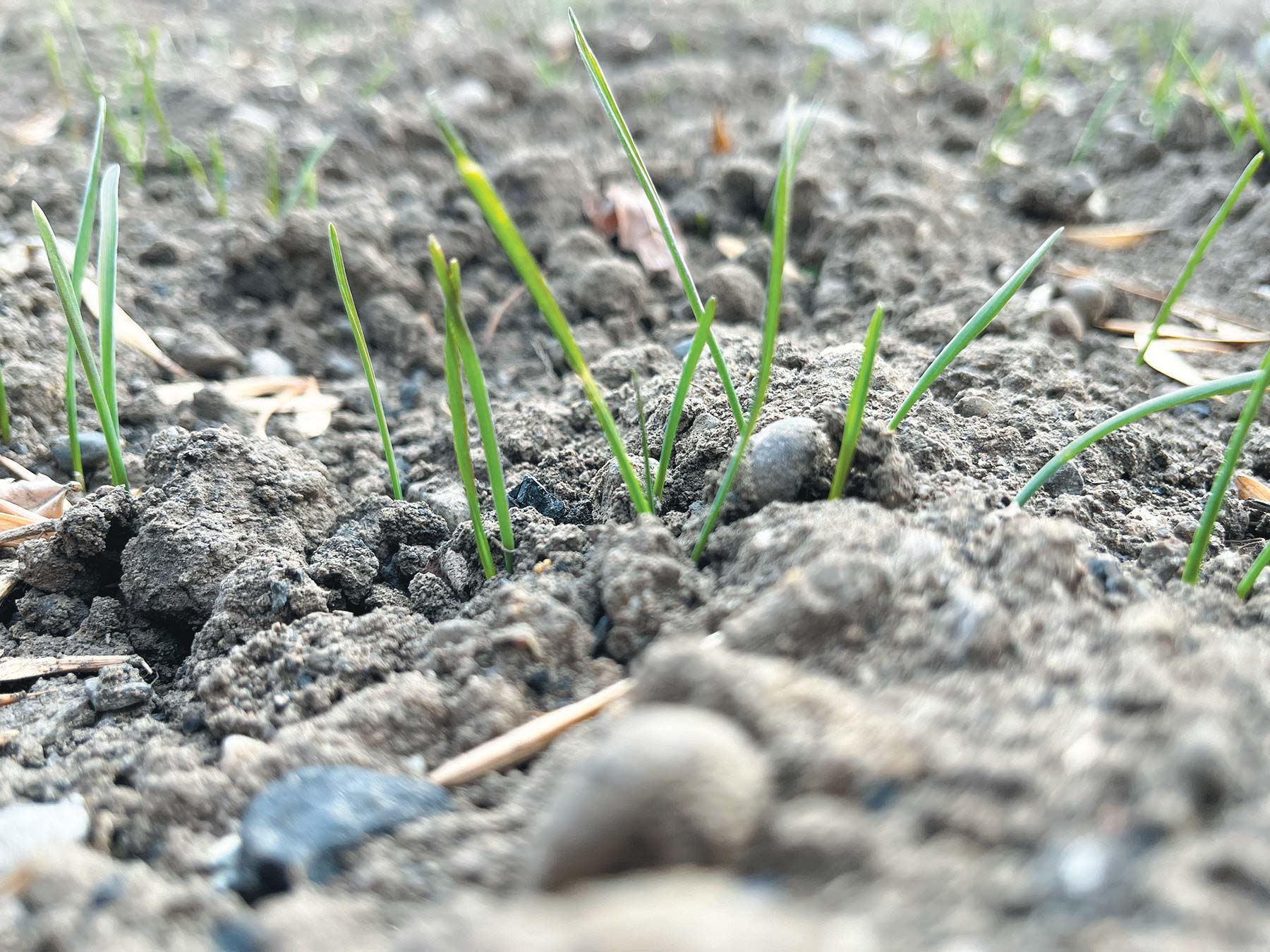
Considering the context around the first Wheatfield installation in New York City, it’s easy to frame wheat as a symbol for all the things going wrong here. Big questions emerge about our population growth, ravenous development, rapidly growing number of unhoused people, and the explosive increase in land value. Through this perspective, the new installation becomes a charged commentary on agriculture, conventional farming systems, and open land.
Even though all of these things are important conversations, this mind-set misses the mark entirely. As long as we point the finger at all that needs to change outside of ourselves, we will miss the opportunity to create the change we want to see within ourselves. Could it be that this installation might trigger something bigger than politics?
Wheatfield: An Inspiration is about wheat as a symbol of unity used as a catalyst for the potential to build community. “It’s about bringing people together,” Denes says. Wheat’s been grown for over 10,000 years and is one of the most widely grown crops in the world. The word company is derived from com-pan, in Latin meaning “together with bread,” which beautifully demonstrates how wheat has brought people together through history.
“[Wheatfield] is about learning how to survive together,” Denes adds. “All adversity teaches us something. Become a better version of yourself through hope. That holds people together beyond politics.” In essence, the growing wheat asks us to interact with it in order to give it meaning.
The wheat was seeded last fall by Kenny Van Dyke of Hyline Farms, a commercial wheat operation in Belgrade. As a fourth-generation Montanan (but first-generation in wheat) Van Dyke understands the value of our farming heritage, the challenges faced by start-ups, and the difficulty surviving a competitive market.
He hopes Wheatfield: An Inspiration will spark real conversations between farmers and residents. He often feels misunderstood as a commercial farmer, knowing all too well the complexities of balancing the needs of the environment and the need for affordable food. He struggles with issues such as how much to invest in soil health on land that will likely be developed. Van Dyke invites people to connect with and ask questions about farming through his thriving Instagram account, @thefarmword. Building the bridge is the first step in building community.
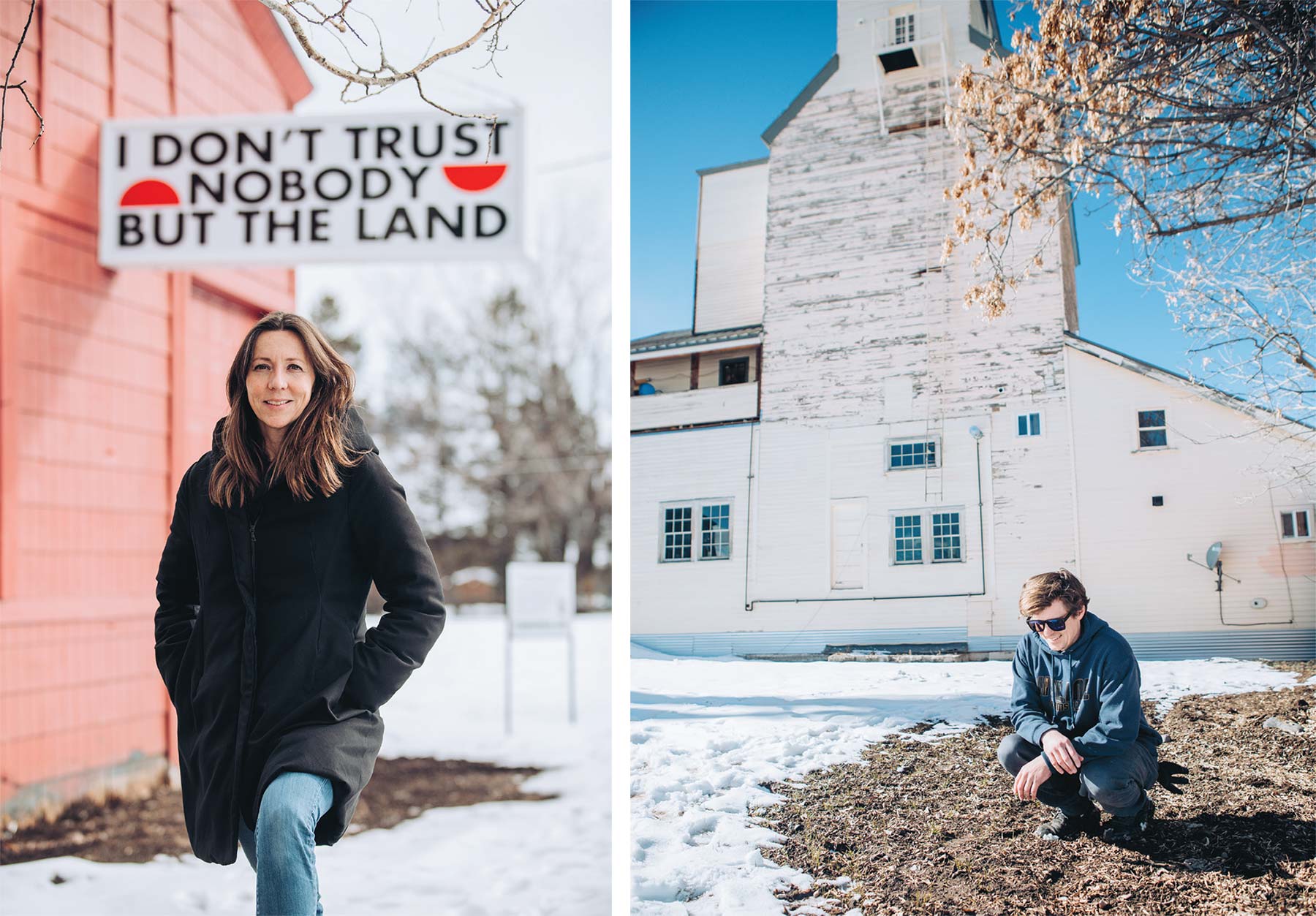
Throughout the spring and summer, volunteers will help maintain the wheat and then harvest it in the fall. The wheat will then be milled into flour and Tinworks plans to partner with artisanal bakery Wild Crumb to create a special bread with the flour that will be available at the bakery and local food banks. Additionally, Tinworks is sponsoring a monthly ticketed speaker series through June at Bozeman’s Rialto theater called “Tinworks Art: In Conversation” that will explore art, food, and community.
Denes has created a public survey available on the Tinworks website that includes thoughtful and provocative questions about humanity, our future, and what we imagine to be possible. Responses will be saved as a time capsule to share with future generations.
One of the most interesting components of this piece might be the invitation to plant wheat in solidarity. Denes welcomes anyone with fallow land or vacant space to participate in the work by planting wheat, in town or otherwise. Seeds of the ancient wheat grain Kamut will be available from Tinworks in May for the public to grow.
In 2015, Denes told Interview magazine, “Anything important has to be almost invisible. And underrated. So the understructure should be underrated, but strong enough to hold the earth.” Denes believes that nothing is too small to hold value. In this case, small might just be the point.
It points toward fractal theory: how nature creates itself anew over and over again, like how a snail shell turns ever closer into itself. As such, if how we behave within our own homes spirals out to become the blueprint for how our neighborhoods, communities, policies, and systems Anything is possible, we have only to plant the seed. behave, then we have much more power than we think.
- For more information about Wheatfield: An Inspiration, visit tinworksart.org. To learn more about Agnes Denes, visit agnesdenesstudio.com. If you are interested in helping maintain the wheat throughout the summer and fall, contact info@tinworksart.org.
WHEATFIELD EVENTS
SEEDS FOR PLANTING IN SOLIDARITY
Seeds will be distributed Friday, May 3, at Tinworks Community Lounge hosted by The LARK on West Main Street as part of Give Big Gallatin Valley. Seeds will also be available at Tinworks throughout May. Check the Tinworks website for more information and pickup times.
MILLS
At harvest time in the fall, Tinworks will have small mills on site to process wheat into flour. Check the Tinworks website for more information and the status of harvest.
COMMUNITY TALKS
TINWORKS ART: IN CONVERSATION AT THE RIALTO THEATER
Bringing together artists, writers, scientists, and creative thinkers from various fields to discuss the topics of our time.
Wednesday, April 17
“This House of Food: Stories from Montana Kitchens” with MSU food historian Mary Murphy and Red Ants Pants founder Sarah Calhoun.
Wednesday, May 15
“Indigenous Food Sovereignty: Cultural Revitalization Through Food” with Mariah Gladstone, founder of Indigikitchen and MSU professor Jill Falcon Ramaker.
Wednesday, June 19
“Food, Art, and Activism in the Work of Agnes Denes” with author Lauren O’Neill-Butler and Tinworks Director Jenny Moore.


